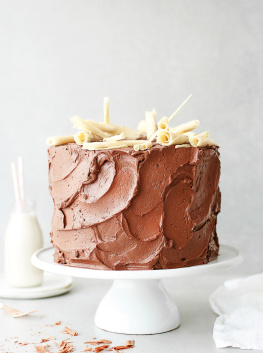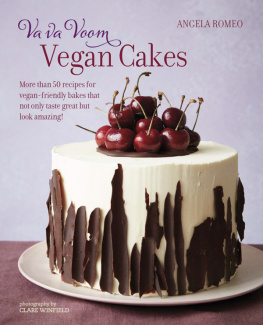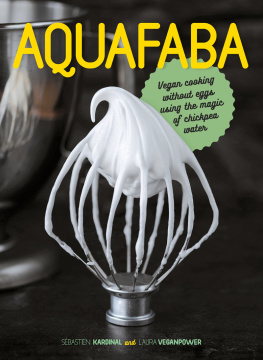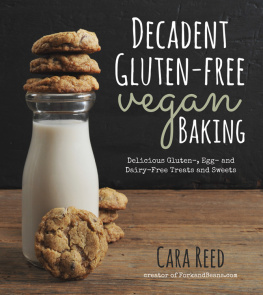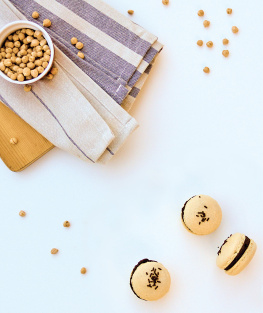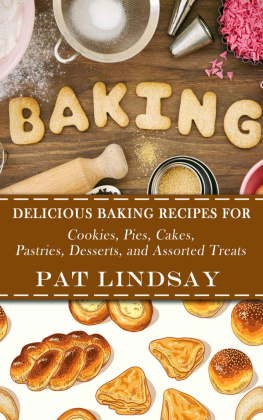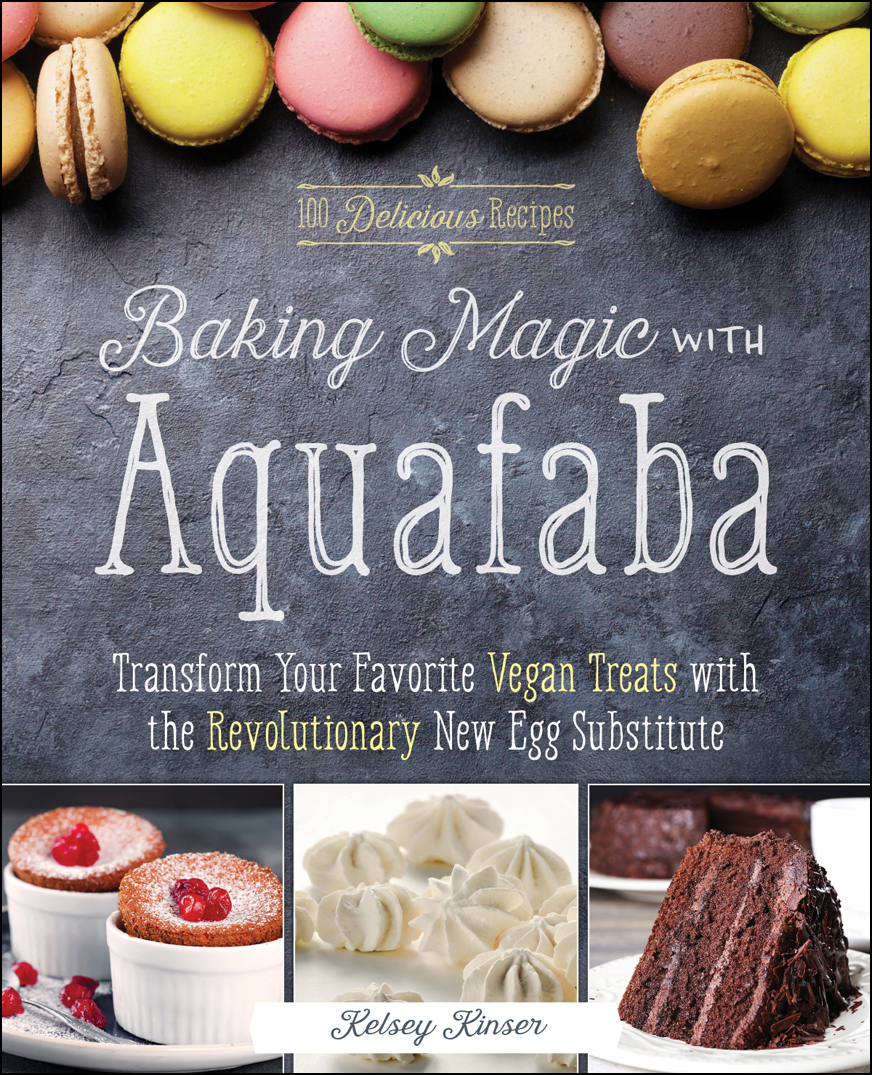
Text copyright 2017 Kelsey Kinser. Design and concept copyright 2017 Ulysses Press and its licensors. All rights reserved. Any unauthorized duplication in whole or in part or dissemination of this edition by any means (including but not limited to photocopying, electronic devices, digital versions, and the Internet) will be prosecuted to the fullest extent of the law.
Published in the United States by
ULYSSES PRESS
P.O. Box 3440
Berkeley, CA 94703
www.ulyssespress.com
ISBN: 978-1-61243-741-5
10 9 8 7 6 5 4 3 2 1
Acquisitions editor: Casie Vogel
Managing editor: Claire Chun
Project editor: Alice Riegert
Editor: Renee Rutledge
Proofreader: Shayna Keyles
Front cover design: Michelle Thompson
Cover photographs: macarons Evgeny Karandaev/shutterstock.com; shortcake Yuliia Mazurkevych/shutterstock.com; meringue Nadia Brusnikova/shutterstock.com; chocolate cake Africa Studio/shutterstock.com
Distributed by Publishers Group West
NOTE: This book is independently authored and published and no sponsorship or endorsement of this book by, and no affiliation with, any trademarked brands or other products mentioned within is claimed or suggested. All trademarks that appear in ingredient lists and elsewhere in this book belong to their respective owners and are used here for informational purposes only. The author and publisher encourage readers to patronize the quality brands mentioned and pictured in this book.
This book is dedicated to my loving husband, Shany David.
Thanks for putting up with the obscene amount of time I spend in the kitchen. I love you.
Table of Contents
Guide
CONTENTS
Aquafaba, also known as bean water, is a magic liquid that has given vegan baking a serious lift. Thats because it acts like egg whites in many ways. It can be used as an egg substitute in all of your favorite baked good recipes. It makes cheese that melts and meringues that fluff up and stay that way. Did I mention it also lightens frostings? Or works in place of an egg wash on breads? Yes, it does all this and more!
So, what is this magic liquid? Aquafaba comes from soaking certain legumes. For the purposes of this book, this always means the liquid from a can of chickpeas or from cooking your own chickpeas, unless other beans are specifically called for. Chickpeas tend to give the most stable and neutral-flavored aquafaba, which makes it suitable for any recipe. The reason for this is currently unknown, but people are continuing to experiment with the soaking liquid of other beans.
Aquafaba may work a lot like a raw egg white, but it has a very different composition. Egg whites are primarily protein with water; aquafaba is primarily water, with starch and some protein. This means that, sadly, aquafaba (AF) is not strong enough to support a recipe like a classic angel food cake. Dont be discouraged, however. The world is full of amazingly talented vegan bakers who work tirelessly to come up with the next evolution in the world of cruelty-free pastries. In fact, aquafaba has only been used in this manner since the end of 2014, when French chef Jol Roessel discovered it. New food miracles are happening all the time, and this book should have enough to keep you busy for a while.
In this book, you will learn how to use aquafaba to advance your baking with recipes for soft, spongy cakes, rich and creamy ice creams, cheese substitutes that melt, and more. Youll learn how to set yourself up for AF success, how to troubleshoot failures, and how to branch out and create your own flavor variations once youve mastered the basics. With the knowledge provided in this book and some practice, you will be on a path to unlimited vegan baking possibilities.
This book starts out with recipes for making and storing your own aquafaba so that you can bake at a moments notice, while also informing you how to use aquafaba from store-bought canned chickpeas. After youve got your bean water ready, you will start with a plethora of breakfast recipes, then move on to cakes and frostings, candies, mousses and pies, cookies, macarons, ice creams, holiday specials, savory treats, and lastly, spreads and dips. (And, yes, macarons are cookies, but theyre so special that I gave them their own chapter.)
I like to work from base recipes, meaning I will start with a basic formula for something like ice cream and then I will alter that base recipe to make variations. This is part of my background working in professional kitchens. Youll see what I mean with recipes like the buttercreams, macarons, and ice creams. Once you become comfortable with the base recipes, you can be creative with your ingredients.
You will find a recipe for homemade aquafaba butter in this book. You can substitute this homemade item for any recipe calling for vegan butter. Alternatively, if you do not want to make your own butter, any good store-bought brand can work. Also note that I do not count cooking spray as an ingredient, and each recipe will tell you if you need to spray the pan or not. Sometimes you want your pans sprayed to allow a quick release of your baked good, and sometimes you deliberately want your confection to stick to the pan so that it rises while baking or holds the correct shape. I like to use a neutral-flavored spray like coconut or canola oil.
Note: Remember the aquafaba is always thinner when it is hot! Use only cool or room-temperature AF. Excess aquafaba can be frozen in ice cube trays for future use.
Before You Get Started
Baking and candy making can move very fast once things get started, which is why you always want your mise en place. This is a fancy French way of saying to make sure you have all of your ingredients measured out, and all of your equipment ready. This way you can complete a recipe with no hiccups in the middle that could lead to disastrous results.
In many recipes for meringues or whipped AF that I find on the Internet, recipe writers will call for the beaters to be set on high. Im not a fan of this as the rapid whipping creates uneven bubbles in the meringue mixture. Why are uneven bubbles an issue? Imagine your meringue is full of 40 percent small bubbles and 60 percent large bubbles. If your large bubbles pop, youll experience a much greater deflation than if your meringue were made up of 80 percent small bubbles. Five popped small bubbles is less noticeable than five popped large bubbles. This is why I always start on medium speed.
Troubleshooting
Aquafaba takes some getting used to, and to be completely honest, sometimes it works, sometimes it doesnt, but there are steps to help ensure youre starting on the best possible foot. The first thing to remember is not all aquafabas are created equal. If you are using AF from a can, you will find some brands work better than others, and it may just take time and experimentation to find what works for you. I have found some of the smaller, organic brands like Brads Organic work very well. No matter what, you want salt-free or reduced salt aquafaba.
In this book, you will find two recipes to make your own AF, one using a stove and another using a slow cooker. Always make sure, whether you get it from a can or make it, that you strain your AF! Stray pieces of chickpea can devastate the bubbles in a fluffy meringue and bring down an otherwise light and airy cake. Straining prevents stray items from getting into your baked good.



